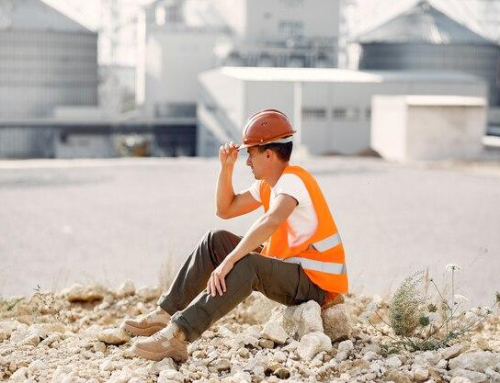Workplace safety is a critical concern in any industry, particularly in environments where heavy machinery, manual labor, or potentially hazardous conditions are involved. Among the various types of injuries that can occur, bone injuries stand out due to their severity and the long recovery times they often require.
Preventing and managing these injuries is essential to maintaining a healthy and productive workforce. This blog will discuss effective strategies for preventing bone injuries and managing them when they occur. We’ll explore the importance of safety training, proper equipment handling, and the necessary response to accidents to minimize the impact of bone injuries in the workplace.
Understanding Bone Injuries in the Workplace:
Bone injuries, which include fractures, breaks, and severe sprains, are among the most serious injuries that workers can face. These injuries can occur in various ways, such as falls, accidents involving machinery, or the improper lifting of heavy objects.
The consequences of bone injuries can be significant, often leading to extended periods of absence from work, costly medical expenses, and in severe cases, permanent disability. Therefore, understanding the causes and preventive measures is crucial for employers and employees alike.
In 2021, workplace falls were a leading cause of serious injuries across various industries, accounting for a significant portion of workplace accidents. According to the National Safety Council (NSC), there were approximately 244,000 serious injuries caused by falls in the workplace that year. Among these injuries, more than 25% involved fractures or other types of bone-related damage, underscoring the severity and frequency of such incidents. This statistic highlights the critical need for comprehensive safety measures in workplaces, particularly in environments where employees are exposed to fall hazards.
The Importance of Safety Training:
Safety training is the foundation of injury prevention in any workplace. Employees must be equipped with the knowledge and skills to recognize potential hazards and take appropriate action to avoid injury. First aid training courses, including basic first aid training and more advanced options, provide employees with essential skills to respond effectively to injuries when they occur.

Treating a bone fracture, demonstrating the critical role of advanced first aid courses in workplace injury management.
Proper Handling of Equipment:
Many bone injuries occur due to the improper handling of equipment and tools. Whether it’s lifting heavy objects, operating machinery, or using hand tools, improper technique can easily lead to fractures, sprains, or more severe bone injuries. Training workers in the correct use of equipment is essential to prevent these types of injuries.
For instance, employees should be trained in the proper lifting techniques to avoid overloading their bodies and putting excessive strain on bones and joints. This is particularly important in industries such as construction, manufacturing, and warehousing, where heavy lifting is a common part of the job. Proper training in these areas, which can be covered in intermediate first aid courses, helps workers understand the limits of their bodies and how to use equipment like forklifts or dollies to assist with heavy loads.
Additionally, workers should be trained to recognize when equipment is faulty or in need of maintenance. A malfunctioning machine can easily cause accidents that result in bone injuries. Employers should implement regular maintenance checks and ensure that all workers are aware of the procedures for reporting and addressing equipment issues.
Creating a Safe Work Environment:
The physical environment in which employees work plays a significant role in preventing bone injuries. A well-organized, clean, and hazard-free workspace minimizes the risk of accidents that could lead to bone injuries. Employers should take proactive steps to identify potential hazards in the workplace and address them before they lead to injuries.
For example, ensuring that walkways are clear of obstructions, floors are kept dry and free of spills, and all tools and equipment are stored properly can help prevent slips, trips, and falls—the most common causes of bone injuries. In addition, providing adequate lighting and clear signage can help employees navigate their workspaces more safely, reducing the risk of accidents.
Regular safety audits and inspections can help identify areas where improvements are needed. Involving employees in these audits can also be beneficial, as they can provide insights into potential hazards that may not be immediately apparent to management. Encouraging a culture of safety, where workers feel empowered to speak up about potential risks, is essential for creating a safe work environment.
The Role of Personal Protective Equipment (PPE):
Personal Protective Equipment (PPE) is a critical component of injury prevention in the workplace. PPE includes items such as helmets, gloves, safety glasses, and steel-toed boots, all of which are designed to protect workers from injury. When it comes to preventing bone injuries, the right PPE can make all the difference.
For example, helmets protect the skull from impact injuries, which can result in fractures or more severe bone damage. Gloves can help protect the hands and fingers from crushing injuries or fractures when handling heavy or sharp objects. Safety footwear, such as steel-toed boots, is essential in environments where heavy objects could fall on workers’ feet, potentially causing fractures.

Administering first aid, showing the importance of basic first aid training in workplace safety.
Responding to Bone Injuries:
Despite the best preventive measures, accidents can still happen. When they do, it’s crucial to have a plan in place for responding to bone injuries effectively. This is where first aid training courses and advanced first aid courses become invaluable. These courses equip employees with the knowledge and skills needed to provide immediate care to someone who has suffered a bone injury, potentially reducing the severity of the injury and improving the chances of a full recovery.
For instance, if a worker suffers a fracture, knowing how to immobilize the affected area until professional medical help arrives can prevent further damage and reduce pain. Similarly, if a worker experiences a severe sprain, applying appropriate first aid can help minimize swelling and reduce recovery time.
Employers should ensure that first aid kits are available and easily accessible in all work areas, and that employees know how to use them. In addition, having a clear protocol for contacting emergency services and ensuring that employees know who is responsible for coordinating a response in the event of an accident is essential.
The Importance of Regular Safety Drills:
Regular safety drills are an effective way to reinforce training and ensure that all employees are prepared to respond to accidents, including those that result in bone injuries. These drills should simulate real-life scenarios that workers might encounter, allowing them to practice their response and become more confident in their ability to handle emergencies.
For example, a drill might involve simulating a fall from a height, where workers practice using their fall protection equipment and responding to the resulting injuries. Another drill could involve a confined space scenario, where workers must navigate the space safely and respond to a simulated injury.
Encouraging a Culture of Safety:
Finally, preventing and managing bone injuries in the workplace requires a strong culture of safety. This means that safety should be a priority at all levels of the organization, from management to frontline workers. Employers should encourage open communication about safety concerns and ensure that employees feel comfortable reporting hazards or incidents without fear of reprisal.
Preventing and managing bone injuries in the workplace is a multifaceted process that involves proper training, safe equipment handling, a well-organized work environment, and a strong culture of safety. By investing in first aid training courses, including basic first aid training, advanced first aid courses, and intermediate first aid courses, as well as fall protection training and confined space training, employers can equip their workforce with the skills and knowledge needed to minimize the risk of bone injuries and respond effectively when they occur.
Metro Safety Training, based in Vancouver and Surrey, offers comprehensive training solutions to help employers create safer work environments. From first aid training courses to specialized safety training, Metro Safety Training is your partner in workplace safety.
Contact us today to learn more about how we can help you protect your workers and prevent bone injuries in your workplace.








